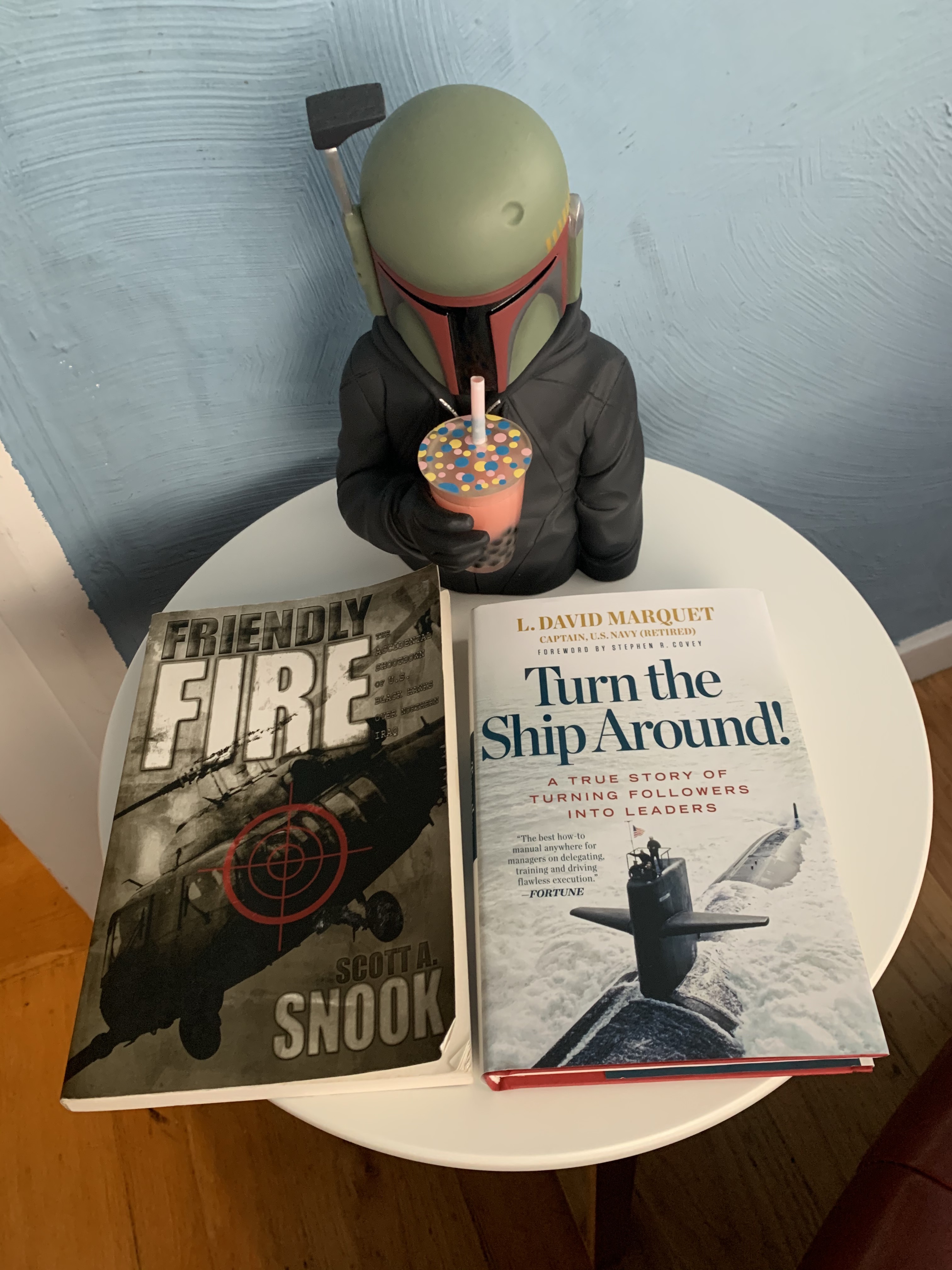A narrative introduction to modern safety science

If you enjoy a very high fiber, data dense information diet, you might begin an exploration of modern safety science—the parent field of resilience engineering, which itself underlies the work of Learning from Incidents in Software and Adaptive Capacity Labs)—by diving head first into Sidney Dekker's recent textbook Foundations of Safety Science. The rest of us likely benefit from an introduction rooted in story and narrative (for more on the power of story, see this interview with Gary Klein).
When it comes to complex socio-technical systems, I'm happy to report that I've run across two great works of non-fiction whose stories I believe could help prime the curious for a deeper exploration of modern safety science:
Friendly Fire by Scott A. Snook covers a catastrophic failure of a complex system: the friendly fire shoot down of two Black Hawk helicopters over Iraq in 1994.
In Turn the Ship Around!, L. David Marquet describes how increasing autonomy and moving from “leader-follower” to “leader-leader” helped the USS Santa Fe, a nuclear-powered submarine (read: a very complex system!), go from among the worst performing in the US fleet to one of the best in 1999.
I found both books really interesting and, even better for these purposes, fast and easy reads! If you're curious about modern safety science but put off by any (perceived!) roadblocks or barriers to entry, I encourage you to try starting with them. If you do, please let me know what you think once you finish!
To reply you need to sign in.